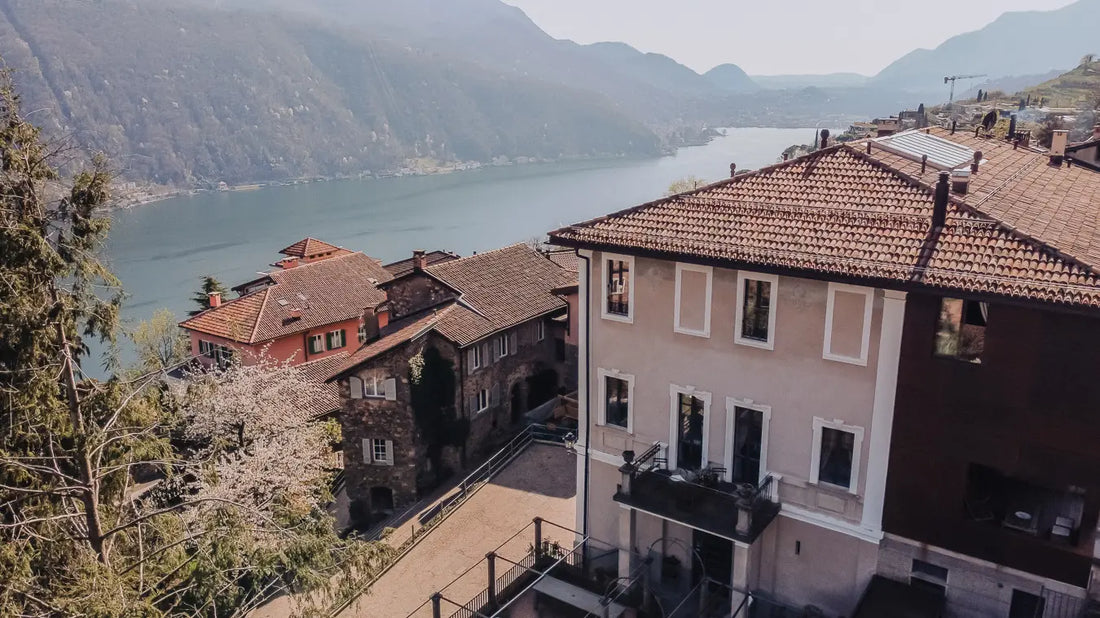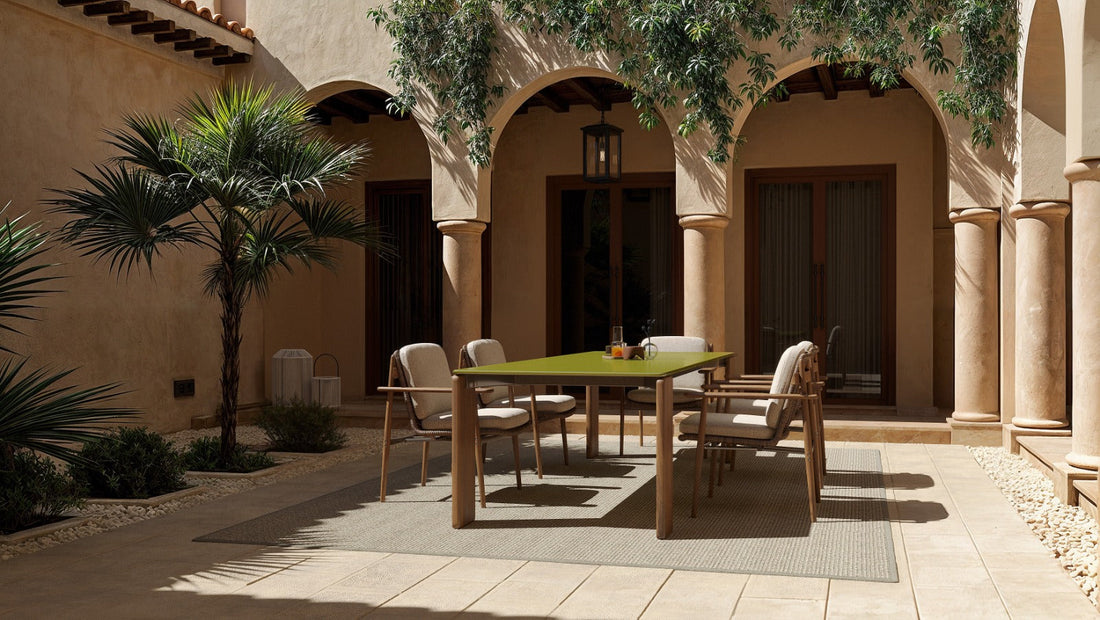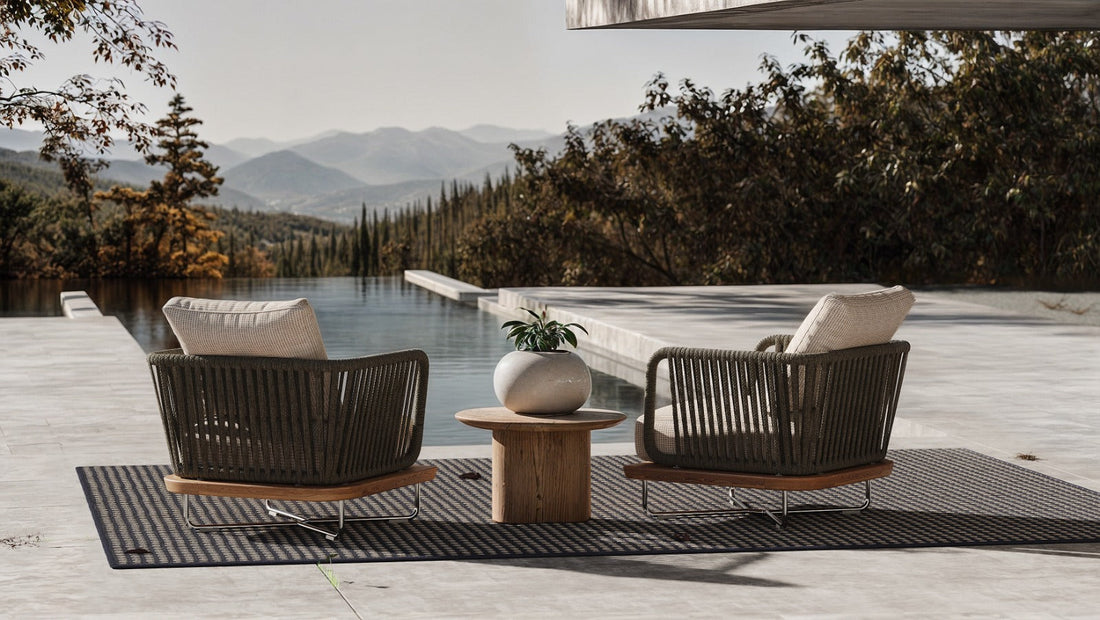European style as the foundation of modern interior concepts
The influence of European design is still felt today – whether in historic villas, stylish city apartments, or modern outdoor lounges. From French sophistication to Italian craftsmanship to British coziness: classic European style elements lend modern spaces character, depth, and durability .
Those who furnish a home today—whether privately or in a boutique hotel—want more than just functionality. It's about atmosphere, style, and the art of blending old with new.
What distinguishes European classics
French elegance: classic meets comfort
The French style combines luxury with casualness. Typical features include:
- subtle colors such as cream, pastel or deep blue
- Mouldings, wall paneling & opulent lighting
- antique furniture with curved lines
- Vintage chic as a counterpoint to clear surfaces
Even modern rooms can be enhanced with French accents – for example, with a classic chandelier above a puristic dining table.
Italian style: craftsmanship & harmony
Italian interiors combine tradition with innovation. Characteristic features include:
- Materials such as marble & natural stone
- warm colors: terracotta, olive green, burgundy
- symmetrical room layout & proportions
- individual, often handmade pieces of furniture
A modern room with Italian influence thrives on high-quality textiles, sculptural furniture, and fine materials – often combined with designer pieces or outdoor rugs in natural tones.
British country house style: natural, homely, charming
English style brings security into the home – with:
- Layering of textiles: wool, floral fabrics, velvet
- muted colors such as sage green or mud blue
- classic furniture: Chesterfield, wing chairs & Co.
- lovingly decorated fireplaces and reading corners
Modern interpretations also rely on warm materials and deliberate breaks – for example, by combining a Persian carpet with simple furniture.
Spanish colonial aesthetics: warmth & structure
Spanish-inspired rooms appear grounded and artisanal:
- Ceramic tiles and terracotta provide texture
- Wrought iron as a decorative detail
- deep colors: ochre, rust red, caramel
- hand-painted patterns on walls or textiles
In a modern context, a roughly plastered section of wall or visible wooden beams are sufficient to cite this tradition.
How classic elements enrich modern spaces
The key lies in the combination: Not everything has to be “antique” – even individual accents such as stucco, a vintage mirror or a carpet with history create an impact.
Strong effects are caused by:
- Mix of old and new : antique furniture next to clear lines
- Architectural details : e.g. stucco, moldings or wooden beams
- Vintage textiles : such as high-quality outdoor cushions with structure or hand-woven rugs
This way, the room is not overloaded, but appears deliberately curated.
Colors & Materials: The subtle difference
European color schemes emphasize earthy nuances, muted tones, and deliberate contrasts. Ideas for modern implementation:
- Walls in sand, ivory or lime white
- Accents in dark blue, sage green or terracotta
- Natural materials: linen, wool, oiled wood
- Statement pieces in brass, glass or stone
A room with a soft ivory wall, velvet blue outdoor cushions, and a handmade rug—that's modern, European elegance.
High-quality materials – for indoor & outdoor use
Whether indoors or outdoors: the choice of materials is a promise of quality .
Typically European are:
- recycled wood with history
- Marble & Travertine for tables, floors & fireplaces
- Linen, wool, performance acrylic – also for weatherproof blankets & pillows
- handmade ceramics & glass as decoration
Martin Gabriel offers exactly this combination – designer outdoor textiles that do justice to classic living styles in terms of appearance, feel and quality, but are also absolutely weatherproof.
Timeless instead of trendy: Sustainability through style
The greatest strength of European style? It thrives not on trends, but on sophistication.
Quality over quantity. Craftsmanship over short-lived design.
Furnishing here means thinking long-term, buying consciously, and designing with personality. Those who invest in handcrafted furniture, high-quality outdoor rugs , limited-edition cushions, or durable blankets create spaces that last.
Conclusion: History meets present
European design inspires modern living spaces around the world. Whether it's architectural details, textures, or color schemes – those who deliberately incorporate elements of classic styles create interiors with character, depth, and soul .
Style doesn't fade. Style is passed on.







